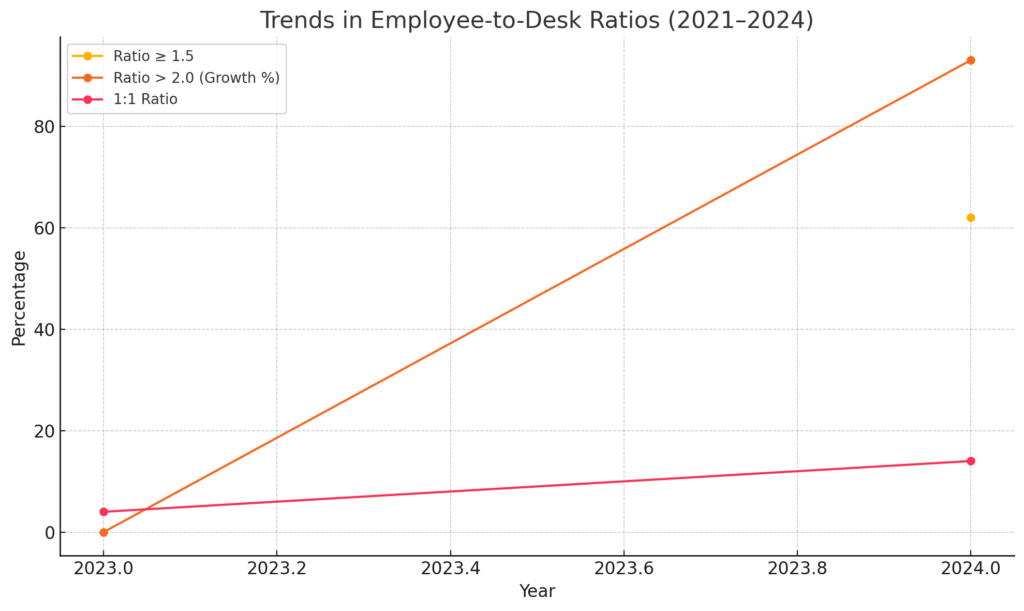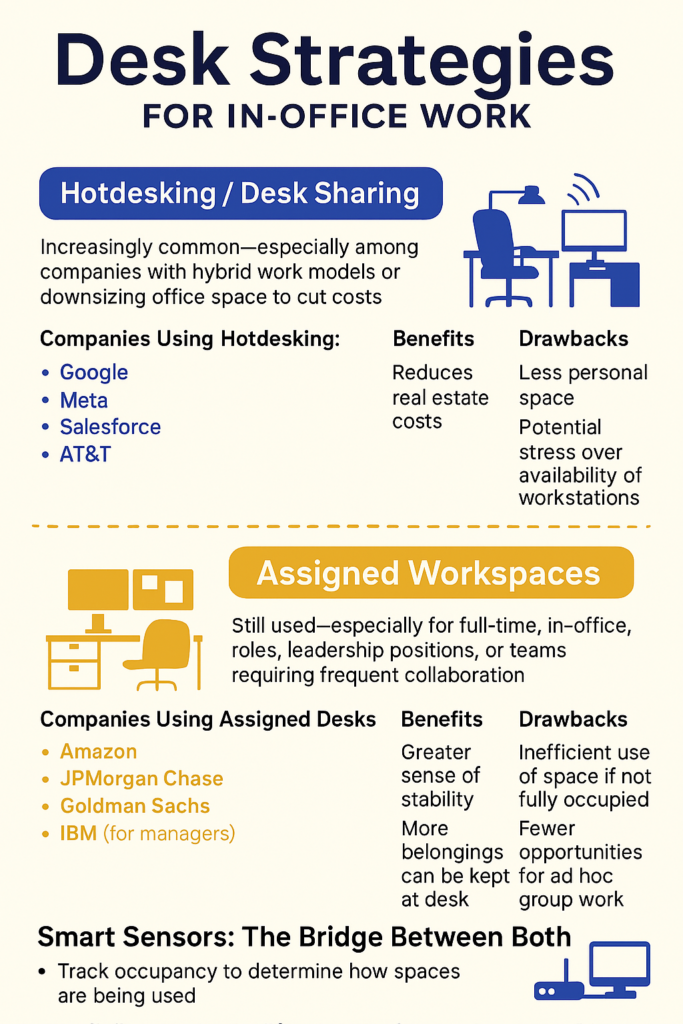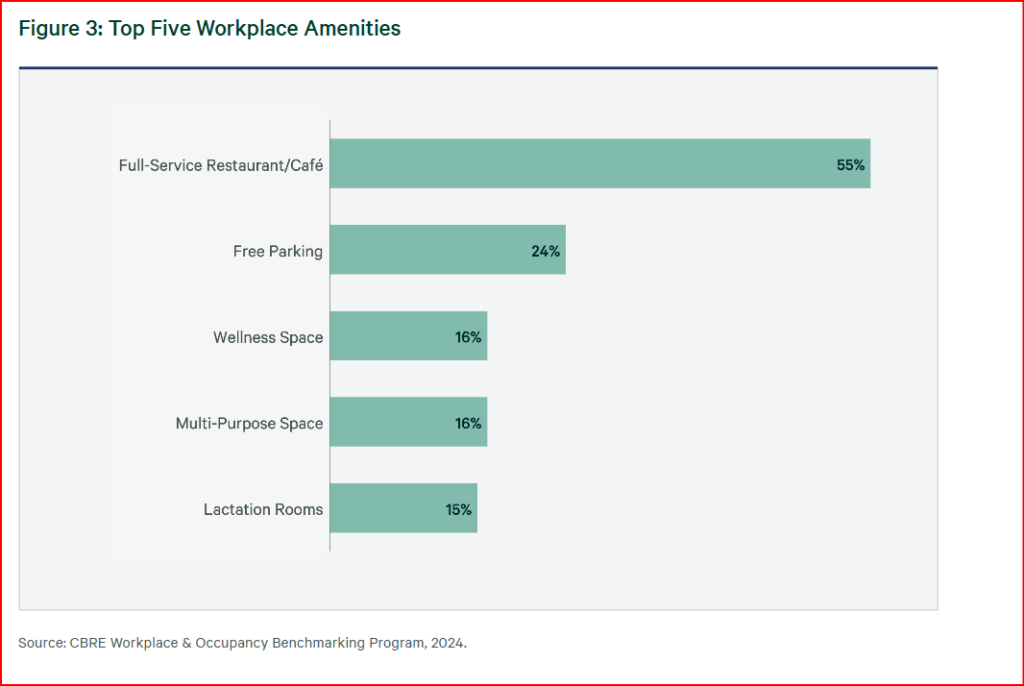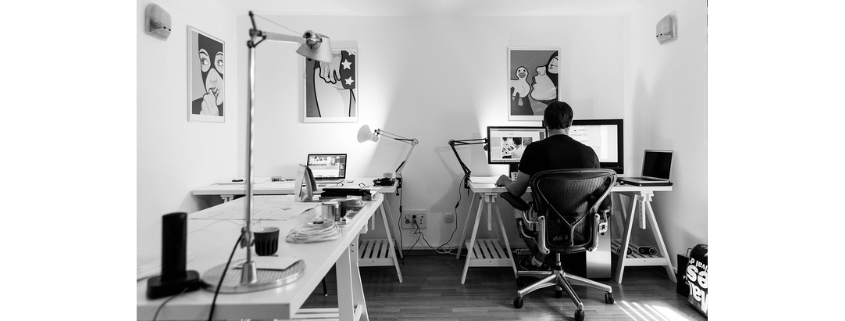As hybrid and remote work continue to influence office culture, the question of whether employees need a designated desk has become a strategic consideration for businesses. Balancing flexibility, collaboration, and real estate costs, companies must rethink how space best supports work.
In 2019, approximately 6.5% of private-sector employees worked mainly from home or another remote location. Today, nearly 75% of employed adults work remotely at least part of the time. That’s a massive transformation in how businesses operate, and much of it is due to the impact of the COVID-19 pandemic. The abrupt change in work location caused by the pandemic was followed by a paradigm shift in worker preferences, followed by a tug-of-war in many companies about where and how employees can and must work.
Not surprisingly, given those numbers, only about five percent of office seating was unassigned in 2019, contrasted with 2025, when 60% of US employers use some variation of desk sharing. CBRE reports that the percentage of companies using assigned seating has dropped from 83% to 55%, while the number of companies with available hoteling and visitor seats has grown from 5% to 9%.
Recent data from CBRE illustrates the ongoing evolution of how and where people work, showing that 62% of organizations now use a target of more than 1.5 employees per desk, and many reach a 2:1 target ratio.

It’s important to note that the ratios vary between industries and even among different functions within the same company.
Workspace policies align with remote work rules.
In many corporate offices, the debate over dedicated versus shared desks mirrors the company’s approach to remote versus onsite work. Major employers requiring employees to work onsite all or most days are far more likely to have designated workspaces than employers supporting a hybrid work approach. Companies adhering to traditional assigned spaces include:
Amazon
JPMorgan Chase
Goldman Sachs
IBM
On the other side of the spectrum, these companies support remote and hybrid work while opting for shared or hoteled workspaces:
Google
Meta
Salesforce
AT&T
Both dedicated and shared workspace approaches have pros and cons.
Employees benefit from a sense of ownership in work areas with assigned spaces, typically including a mix of open desks, cubicles, and private offices. They can return to the same space each workday and have confidence that it will be available. They can also personalize their space and leave some work items there for future use.
The downsides to assigned desks include underutilization and higher costs due to the need for more square footage.
A workplace with shared desks is often more flexible and efficient than a traditional office. Advantages include:
Reduced need for space, resulting in cost savings
Flexibility for hybrid workers and interactive team dynamics
Enhanced networking opportunities as workers interact with a greater number of colleagues
Broader access to private spaces, enabling workers to reserve work areas that match their changing needs.
Yet, some employees feel disconnected from the office without a familiar, personal space. Some employees view desk sharing as a loss of identity or status in the workplace.

Desk-sharing protocols need room for flexibility.
It makes sense to adopt a flexible approach to desk-sharing. Some roles aren’t compatible with remote work, and workers reporting to the facility daily appreciate the comfort of an assigned space. Companies gearing up to enforce return-to-office mandates want fair, universal policies, and employees are frustrated by exceptions for favored workers. Companies like Dell and Redfin, which hired many fully remote workers during the last five years, exempt from their RTO mandates those workers who live outside a specific radius from available offices.
Rethinking office space offers opportunities.
Employers shifting to shared workspaces aren’t just reducing the number of assigned desks and reflecting that drop with a decline in the office footprint. Instead, they are leveraging the changes to redesign existing space to meet employees’ needs better. For example, employers may add more options, ranging from collaborative spaces to quiet zones, multimedia meeting rooms, and amenities like game rooms and lactation facilities.

Data from CBRE’s Workplace and Occupancy Benchmarking Program shows a 5% increase in collaboration space and a 6% jump in space devoted to amenities between 2021 and 2024.
Smart sensors can help optimize occupancy.
Smart sensors can clarify and quantify the need for space by tracking occupancy to determine how individual workspaces, meeting rooms, other collaborative areas, and even break rooms and restrooms are used. The potential benefits of this tracking include supporting more informed real estate decisions, reduced energy usage, enhanced comfort, better space utilization, and a more effective approach to desk sharing.
Smart sensors provide a wealth of information companies can use to understand and adapt their environment. For example, organizations may not know how many people work in the office each day, where, and for how long. Even counting badge entries isn’t entirely accurate; it overlooks people who piggyback on entry or exit and re-enter and doesn’t tell you where they go within the building.
In contrast, AVUITY sensors provide robust information about how your space is being used. The data will show not just how many employees and visitors are present but where they go and how long they stay. This data provides the information you need to determine how many workspaces are needed, what size and configuration of conference rooms and collaboration areas are most used, and even how often break rooms and restrooms need cleaning based on their usage.
Sensor data enhances acceptance of shared desk protocols.
When employees convert to a shared workspace system, one of the frequent complaints is the challenge of finding an appropriate space to work in. Your organization may experience a drop in productivity if employees are forced to manually identify and claim a workstation, and workers may also be frustrated when trying to locate colleagues.
Using a sensor-based booking system eliminates this problem. Employees can quickly determine the location and type of workspaces available, and based on reservations, they can quickly establish the location of colleagues. The same sensor system, when connected to your HVAC, will ensure the comfort of employees by adjusting temperature and humidity based on their presence.
As workplaces evolve, the debate over dedicated versus shared desks reflects larger questions about flexibility, culture, and efficiency. There’s no one-size-fits-all answer, and each company seeks to adopt strategies that reflect their workforce’s needs, values, and work habits. Tools like smart sensors and flexible design help organizations support productivity while using space more effectively. The key isn’t just choosing between assigned or shared—it’s designing a system that empowers employees to do their best work wherever they sit.


